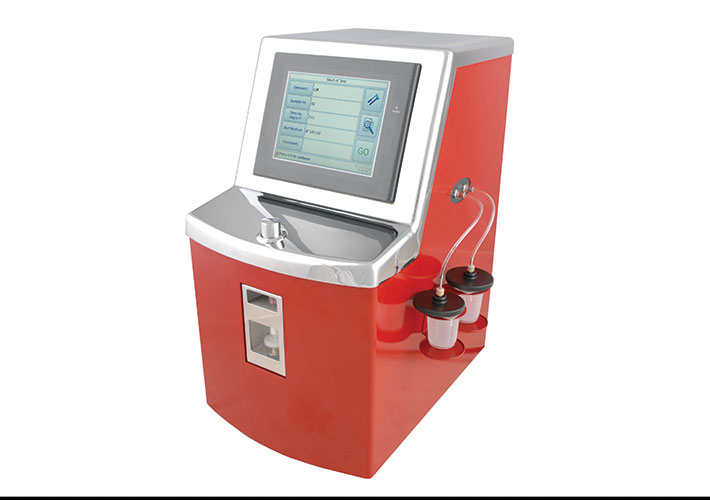
Participation in ASTM Is Vital to One UK Business
Stanhope-Seta is a manufacturing company established in 1940 and based in the United Kingdom. The privately owned company employs 70 staff, six of whom participate in developing ASTM standards.
The business specializes in the design and manufacture of quality control test instruments that measure the performance characteristics of automotive and aviation fuels. “SETA” instruments are also used in a wide range of other industries, including lubricants, chemicals, flavors, and fragrances. The company has recently received Queen’s Industry Awards for design innovation and global trade.
Being Present at the Table
Stanhope-Seta has been a member of ASTM since the 1950s and actively participates at the technical committee level. We work mainly with the committee on petroleum products, liquid fuels, and lubricants (D02). This work ensures that we remain at the forefront of worldwide specifications and safety standards, while giving us a platform for two-way sharing of information and technical developments. This longtime relationship with members of our international market allows us to foster and develop ideas in countries where different national specifications are adopted, such as GOST standards in Russia and the standards from the Bureau of Indian Standards in India.
Certainly, our association with ASTM opens doors. Being active on ASTM technical committees puts us in close contact with competitors and colleagues in our very wide industry sector, often those who are responsible for managing current technical issues through standardization. Put simply, if an industry problem is identified, then our challenge is to provide a solution; in this respect Stanhope-Seta has successfully introduced several new test equipments based on ASTM standards over the past few years.
Marketing our Relationship with ASTM
Many customer inquiries specify an ASTM test method; as a result, SETA indexes most products using a relevant ASTM test method or specification designation. This allows quick identification of a suitable product and assures customers that instruments will comply with their testing needs.
Our customers also recognize our compliance with ASTM standards as an indication of product quality, adding confidence to their purchase.
Case Studies
Supporting Safety in the Marine Industry
The safe handling of petroleum cargoes and refined products that may contain hydrogen sulfide (H2S) is an important safety issue for the marine and fuel distribution industries. Exposure to H2S in the vapor phase may cause unconsciousness and can even be fatal if personnel become exposed to high concentration levels.
The relationship between vapor- and liquid-phase H2S levels is difficult to predict. Traditionally, the industry mainly tested marine fuels using a chemical color-change device that indicated the concentration of H2S in a given airspace. But fuels can contain H2S at various concentrations in the liquid phase, and these may migrate into the tank space above the fuel during storage and transit.
Stanhope-Seta searched for a suitable and practical test method that could quickly and reliably measure the potential H2S content of a fuel in its liquid state. The SETA H2S Analyzer was developed with technical guidance from Lloyd’s Register’s Fuel Oil and Bunker Analysis Service along with major oil companies. It was standardized by ASTM and the U.K. Energy Institute (IP).
As a result, a maximum liquid phase H2S limit of 2.00 mg H2S/kg fuel, as measured by ASTM test method D7621 (IP 570) (test method for determination of hydrogen sulfide in fuel oils by rapid liquid phase extraction), has since been included in the International Organization for Standardization’s (ISO’s) marine fuel specification (ISO 8217).
Supporting Jet Fuel Quality
In many countries, policies and directives mandate adding fatty acid methyl ester, or FAME — a renewable biofuel — into automotive diesel. Shared pipeline and storage systems are commonly used to distribute diesel and aviation turbine fuel, and due to certain properties of FAME, unwanted cross-contamination of jet fuel can occur.
Industry analysis of the effects of FAME levels in aviation fuels have been made with a view to specifying a 100 mg/kg limit for FAME in jet fuel. A joint industry project coordinated by the U.K. Energy Institute concluded that “the presence of 400mg/kg of FAME has no statistically significant effect on jet fuel specification or fit-for-purpose properties.”
As a result, ASTM’s specification for aviation turbine fuels (D1655) and a U.K. military defense standard on kerosene turbine fuel are being reviewed to include a higher permitted level of FAME.
To support this test requirement, a new rapid analytical screening test method was needed to easily measure trace levels of FAME throughout the fuel distribution network. Stanhope-Seta responded with its FAME In Jet Instrument, called FIJI, which uses ASTM’s test for FAME in aviation turbine fuel (D7797).
Using ASTM Standards to Achieve Business Goals
The needs of the industries we serve means that our relationship with ASTM dictates much of what we do at the R&D level. Whether this is improving or automating old test methodology or working to introduce new analytical procedures, our work is often driven by new standards being developed in ASTM’s technical committees.
The global fuels industry currently faces huge challenges, which range from the processing of lower grade crude oils to the development of cleaner fuels. ASTM provides a very effective forum for a manufacturing company like Stanhope-Seta to engage in dialogue with our competitors and customers, allowing us to develop our own strategic plans.
Stephen Zeal is a director of Stanhope-Seta and works with ASTM and the U.K. Energy Institute on temperature measurement technologies.
Company Snapshot
Stanhope-Seta, Chertsey, Surrey, United Kingdom
Designers and manufacturers of quality control test instruments
Number of staff: 70
Number of staff who are ASTM members: 6
Trading area: Global
 SN Home
SN Home Archive
Archive Advertisers
Advertisers Masthead
Masthead RateCard
RateCard Subscribe
Subscribe Email Editor
Email Editor